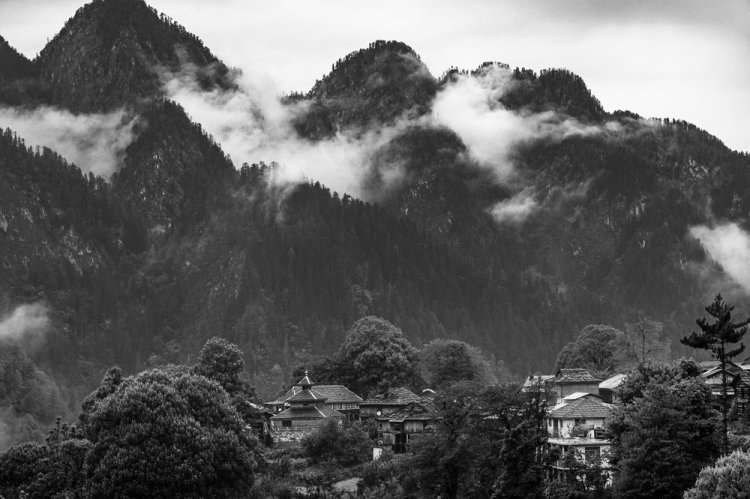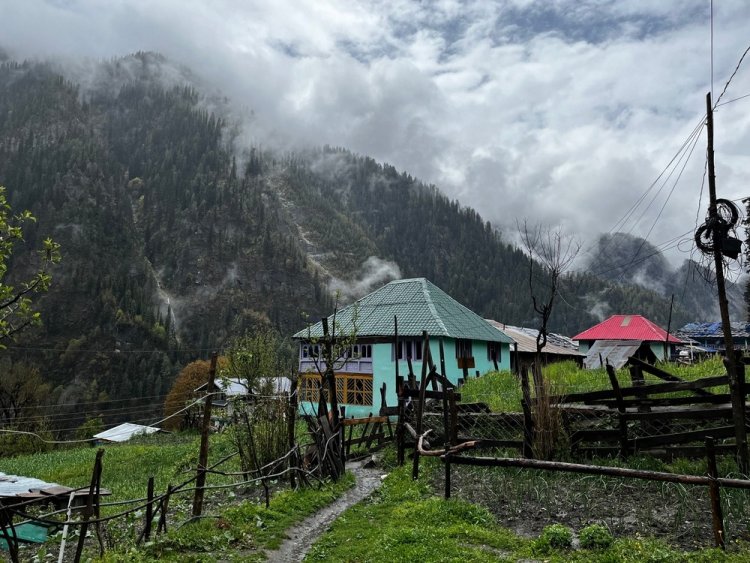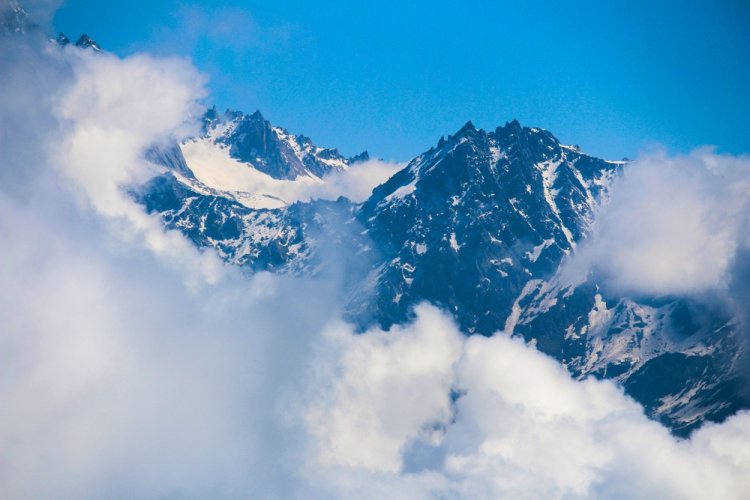What to Wear on the Sar Pass Trek: A Guide for Trekkers
Discover the must-have gear and clothing for the Sar Pass Trek. Stay comfortable and prepared with our easy-to-follow guide for trekkers.
Share this Post to earn Money ( Upto ₹100 per 1000 Views )

Introduction
Embarking on the Sar Pass Trek is like stepping into a world where nature's grandeur is on full display. This trip, which is located in Himachal Pradesh's Parvati Valley, offers amazing views, difficult routes, and a life-changing experience. But before you set foot on this adventure, it's crucial to know what to wear. The right clothing can make the difference between an easy and difficult hike. Let's talk about the essentials you'll need for this amazing journey.
Why the Right Clothing Matters
I can't stress enough how vital the right clothing is for the Sar Pass Trek. Imagine trudging through snow and your boots getting soaked because they're not waterproof, or shivering in the biting wind because your jacket isn't warm enough. The right gear keeps you comfortable, safe, and ready to enjoy every moment of the trek.
The variable weather you'll experience is one of the key reasons wearing appropriate apparel is crucial. The weather can change dramatically, from sunny and warm to cold and windy within hours. Having the right clothing means you can quickly adapt to these changes, ensuring you remain comfortable and safe throughout the trek.
Moreover, the right clothing can prevent injuries and health issues. For example, wearing appropriate footwear can help avoid blisters and sprains, while layering can prevent hypothermia in cold conditions. It's not just about comfort; it's about making sure you're physically prepared to handle the challenges of the trek.
If you're planning to embark on the Sar Pass Trek and want a reliable trekking company to guide you, I highly recommend The Searching Souls. They offer expert guidance, well-planned itineraries, and top-notch safety measures to ensure an unforgettable trekking experience.
Layering: The Magic Formula

Layering is like building a sandwich, each layer serving a specific purpose. This system lets you adapt to changing weather and activity levels. Here's how I layer up:
Base Layer: Your Second Skin
The base layer is your trusty companion in managing moisture. When you're sweating bullets on a steep climb, you don't want that moisture hanging around, making you cold. It's the layer that sits closest to your skin and its primary function is to wick moisture away from your body, keeping you dry and comfortable.
Materials:
- Merino Wool: It's like having a warm hug that doesn't stink after a day's trek. Merino wool is excellent because it's naturally odor-resistant, which means you can wear it for multiple days without it smelling bad.
- Synthetic Fabrics: These dry quickly but can get a bit funky after a while. Synthetics like polyester or nylon are great for their quick-drying properties, but they can retain odors more than natural fibers.
What I Wear:
- Tops: You can mix and match long- and short-sleeve options. I prefer merino wool tops for their versatility and comfort.
- Bottoms: Thermal leggings for those extra chilly days. These are essential for keeping your lower body warm during those cold nights at high altitudes.
Mid Layer: Stay Toasty
This is your warmth provider. When the sun dips and the cold sets in, the mid layer is what keeps you snug. Its function is to act as insulation by retaining body heat.
Materials:
- Fleece: Light, breathable, and warm. Fleece is a fantastic mid-layer because it retains heat well without being too bulky.
- Down: Super warm but a nightmare if it gets wet. Down jackets are incredibly warm but make sure you have a waterproof layer over them if it starts to rain.
- Synthetic Insulation: A great all-rounder, warm and resistant to moisture. Synthetic insulated jackets are versatile and perform well even when damp.
What I Wear:
- Jackets: Fleece jackets or lightweight insulated ones. These are easy to layer over your base layer and under your outer layer.
- Sweaters: A cozy merino wool sweater. It’s perfect for those chilly evenings when you’re relaxing at the campsite.
Outer Layer: Your Shield
This serves as your shield from the snow, rain, and wind. The outer layer keeps the nasty weather out and your body heat in. It's crucial for those exposed, high-altitude sections of the trek.
Materials:
- Gore-Tex: Waterproof and breathable. Gore-Tex jackets are a staple for trekkers because they provide excellent protection against the elements.
- Nylon with DWR Coating: Tough and water-resistant. Water is repelled and you stay dry with the aid of durable water repellent (DWR) coatings.
What I Wear:
- Jackets: Waterproof, windproof, and breathable. A good outer layer jacket is indispensable.
- Pants: Waterproof trekking pants. These ensure that your lower body stays dry, which is crucial for maintaining body heat.
Pants: Finding the Perfect Pair

The right pants can make or break your trek. You need something that can handle the rough trails and changing weather. They ought to be practical, strong, and comfy.
Features to Look For
- Quick-Drying Fabric: Wet pants are no fun. Look for materials that dry quickly to keep you comfortable even if you get caught in the rain.
- Convertible Designs: Zip-off legs are a blessing. Convertible pants allow you to adapt to changing temperatures easily.
- Reinforced Areas: Extra durability where you need it most. Areas like the knees and seat should have extra reinforcement to withstand the rigors of trekking.
When choosing trekking pants, it's also essential to consider the fit. A full range of motion should be allowed; they should be snug but not too tight. Pockets are another handy feature, providing easy access to small items like maps, snacks, or a camera.
During my trek, I found that having at least one pair of waterproof pants was crucial. They saved me during unexpected downpours and kept me comfortable when crossing streams or walking through dewy grass in the mornings.
Footwear: Stepping Strong
Your feet are your best friends on this trek, so treat them right. Good footwear is essential to prevent blisters, provide support, and keep your feet dry and comfortable.
Types of Footwear
- Trekking Boots: Supportive and protective. They offer excellent ankle support and are suitable for rough terrains.
- Trekking Shoes: Lighter but less supportive. These can be a good option for those who prefer less weight and more flexibility.
Key Considerations
- Fit: A snug fit with room for your toes to wiggle. Always try on your trekking boots with the socks you plan to wear to ensure a good fit.
- Waterproofing: A must for those wet trails. Waterproof boots or shoes keep your feet dry, which is crucial for comfort and preventing blisters.
- Socks: Wool or synthetic for warmth and moisture management. Good socks are just as important as good boots. Look for those that provide cushioning and wick moisture away from your skin.
During the trek, I learned the hard way that breaking in your boots before the journey is essential. New boots can cause blisters and discomfort if they haven't been worn enough to mold to your feet. Also, carrying a spare pair of insoles and extra socks can be a lifesaver.
Accessories: Little Things, Big Impact
Don't underestimate the power of accessories. These little additions can make your trek much more comfortable and enjoyable. They often address specific needs that larger clothing items can't.
Must-Have Accessories
- Hat and Gloves: Keep your extremities warm. A warm hat and gloves are crucial for those chilly mornings and evenings.
- Sunglasses: Protect your eyes from UV rays. The high altitude means stronger UV radiation, making sunglasses a must to prevent eye strain and damage.
- Gaiters: Keep snow and debris out of your boots. Gaiters are especially useful when trekking through snow or muddy trails.
- Backpack Rain Cover: Protects your gear from the elements. A rain cover ensures that your clothes and other items stay dry even in heavy rain.
In addition to these, I found that a good trekking pole can be incredibly helpful. It provides extra stability and reduces the strain on your legs, especially during steep descents. A lightweight, breathable buff or neck gaiter is also versatile, serving as a face mask, headband, or scarf as needed.
Seasonal Tweaks
The Sar Pass Trek is beautiful year-round, but each season has its quirks. Your clothing needs will vary depending on when you plan to trek.
Summer (May-June)
- Lighter Layers: Breathable and moisture-wicking. In summer, the days can be warm, so you’ll need light layers that keep you cool.
- Sun Protection: Sunscreen and hats are essential. The sun can be intense, so protect your skin with a high SPF sunscreen and wear a hat with a wide brim.
During summer treks, I also pack a lightweight, packable rain jacket. The weather can change quickly, and having a rain jacket that doesn’t take up much space is handy. Additionally, a hydration system like a CamelBak ensures you stay hydrated throughout the trek.
Winter (September-October)
- Heavier Insulation: Thicker mid and outer layers. In winter, the temperatures drop significantly, especially at night, so you’ll need warmer clothing.
- Extra Accessories: Thermal gloves and hats. Keeping your hands and head warm is crucial in cold weather.
For winter treks, I always include a high-quality down jacket. It’s lightweight yet incredibly warm, perfect for those cold evenings at the campsite. A pair of thermal base layers is also essential for added warmth.
Regardless of the season, it's important to check the weather forecast before you go and pack accordingly. The right gear will help you enjoy the trek, no matter what Mother Nature throws your way.
Smart Packing Tips
Packing smart is key to a successful trek. Here's what I've learned to leave behind and what to bring.
Items to Leave Behind
- Heavy Cotton Clothes: They take forever to dry. Cotton holds moisture, making it heavy and uncomfortable.
- Excessive Electronics: Limited charging options. Only bring what you absolutely need, as charging opportunities are scarce.
- Bulky Items: Go for lightweight and compact gear. Space is at a premium, so opt for items that pack small.
What to Bring
- Multi-Use Items: Gear that serves multiple purposes. For example, a buff can be used as a neck warmer, headband, or face mask.
- Lightweight Sleeping Bag: Compact but warm. Choose a sleeping bag rated for the temperatures you’ll encounter.
- Compact Cooking Gear: If you're planning to cook, bring lightweight and efficient gear.
During my trek, I found that packing cubes were a game-changer. They helped me stay organized and made it easier to find items without unpacking my entire bag. Also, having a first aid kit with essential medications and supplies is crucial. It’s better to be prepared for any minor injuries or illnesses.
Eco-Friendly Trekking
Being mindful of the environment is crucial. Follow the Leave No Trace principles to ensure we keep these trails pristine.
Key Principles
- Pack Out Waste: Take all your trash with you. Leave nothing behind to preserve the natural beauty of the trails.
- Stick to Trails: Preserve the natural vegetation. Walking off-trail can damage delicate plants and erode the landscape.
- Respect Wildlife: Admire from a distance. Disturbing wildlife can disrupt their natural behaviors and harm the ecosystem.
Additional Tips
- Reusable Items: Use reusable water bottles and containers to minimize waste.
- Eco-Friendly Products: Choose biodegradable soaps and detergents.
- Minimal Impact Camping: Use established campsites and avoid creating new fire pits.
Trekking sustainably not only preserves the environment but also ensures that future generations can enjoy the same natural beauty. The small amount of work has a big effect.
Conclusion
Preparing for the Sar Pass Trek involves more than physical readiness. Your clothing choices can significantly impact your comfort and safety. By following this guide, you'll be well-equipped to tackle the trek, enjoy the stunning scenery, and create unforgettable memories.
FAQs
1. What is the best time to go on the Sar Pass Trek? The best time for the Sar Pass Trek is between May and October, with each season offering different experiences and challenges.
2. How should I prepare physically for the Sar Pass Trek? Regular cardiovascular exercises, strength training, and hiking practice are essential for preparing physically for the trek.
3. Can I rent trekking gear in Himachal Pradesh? Yes, there are several shops in Himachal Pradesh where you can rent trekking gear, including clothing and accessories.
4. What should I do if I encounter altitude sickness? If you experience altitude sickness, it's crucial to descend to a lower altitude, rest, and hydrate. Seek medical attention if symptoms persist.
5. Are there any specific permits required for the Sar Pass Trek? Yes, you need permits for the Sar Pass Trek, which can be obtained from the local authorities or trekking agencies.
By following this guide, you'll be ready to tackle the Sar Pass Trek with confidence and enthusiasm. Happy trekking!







